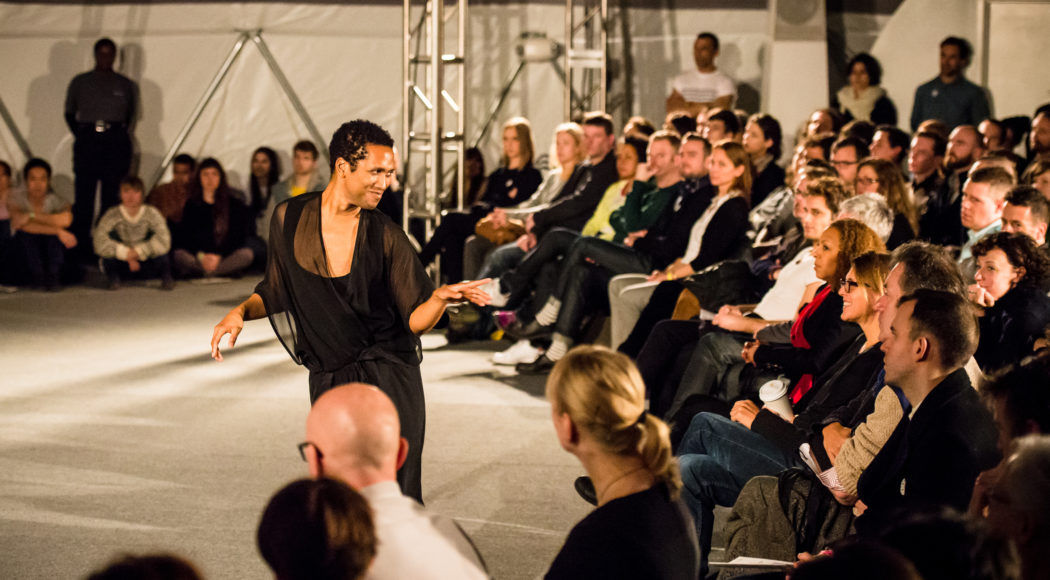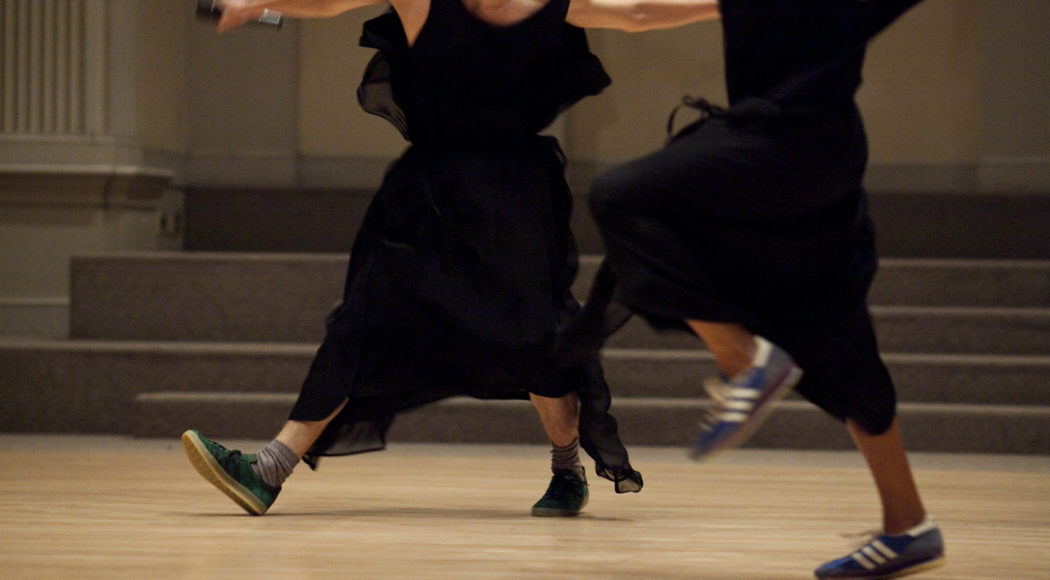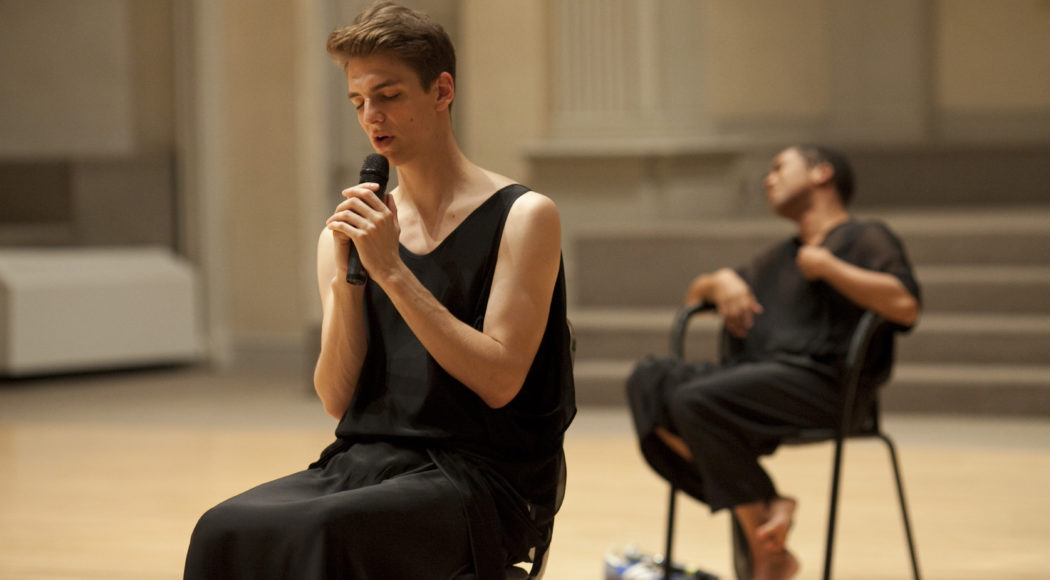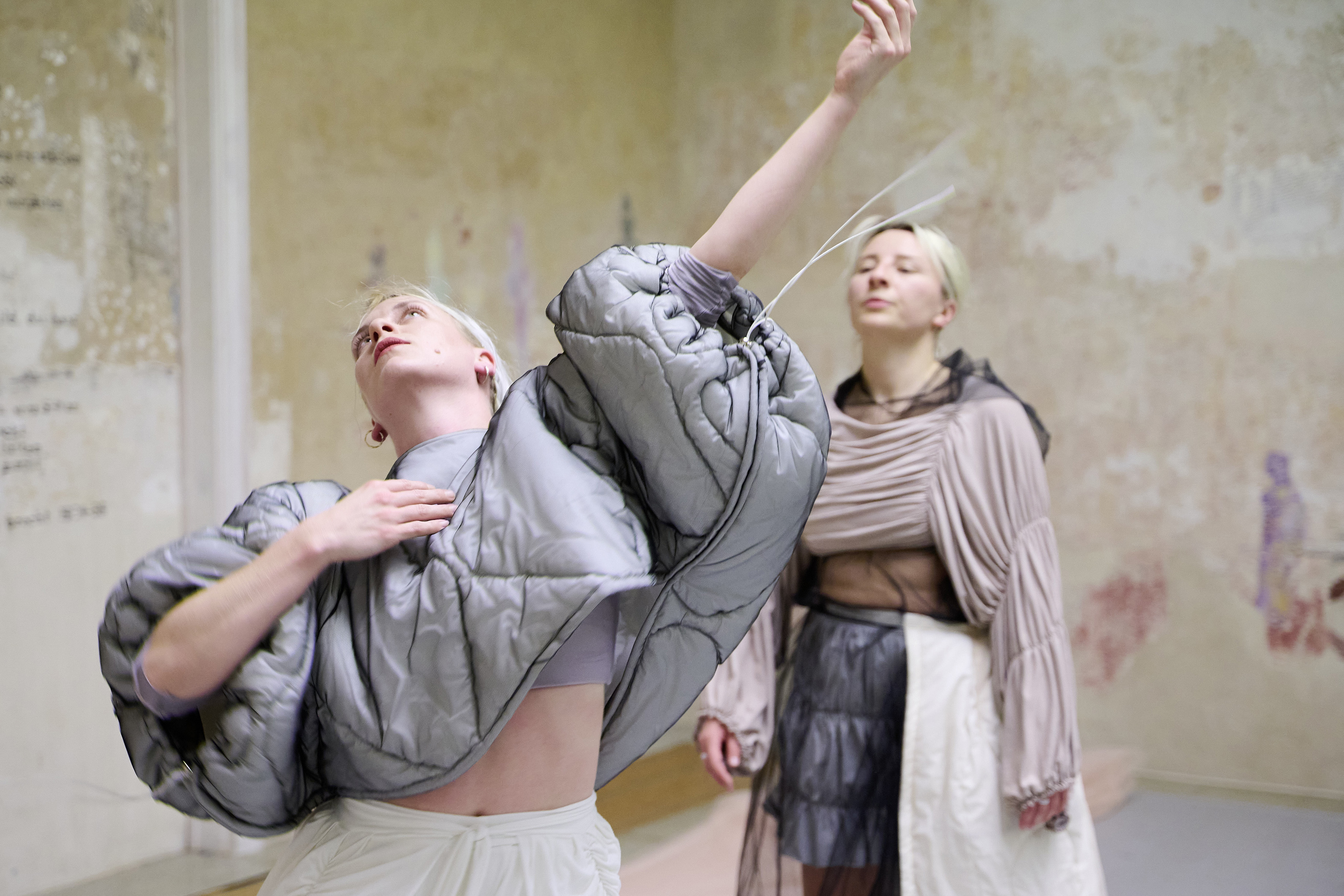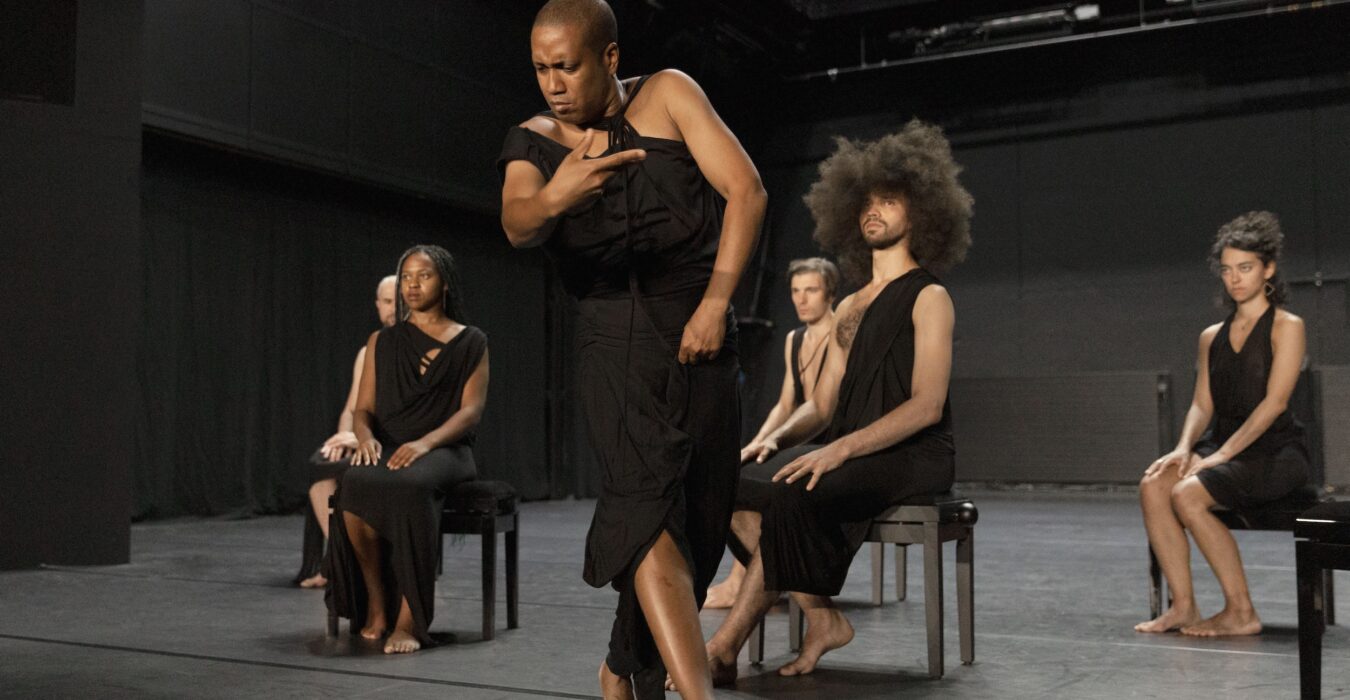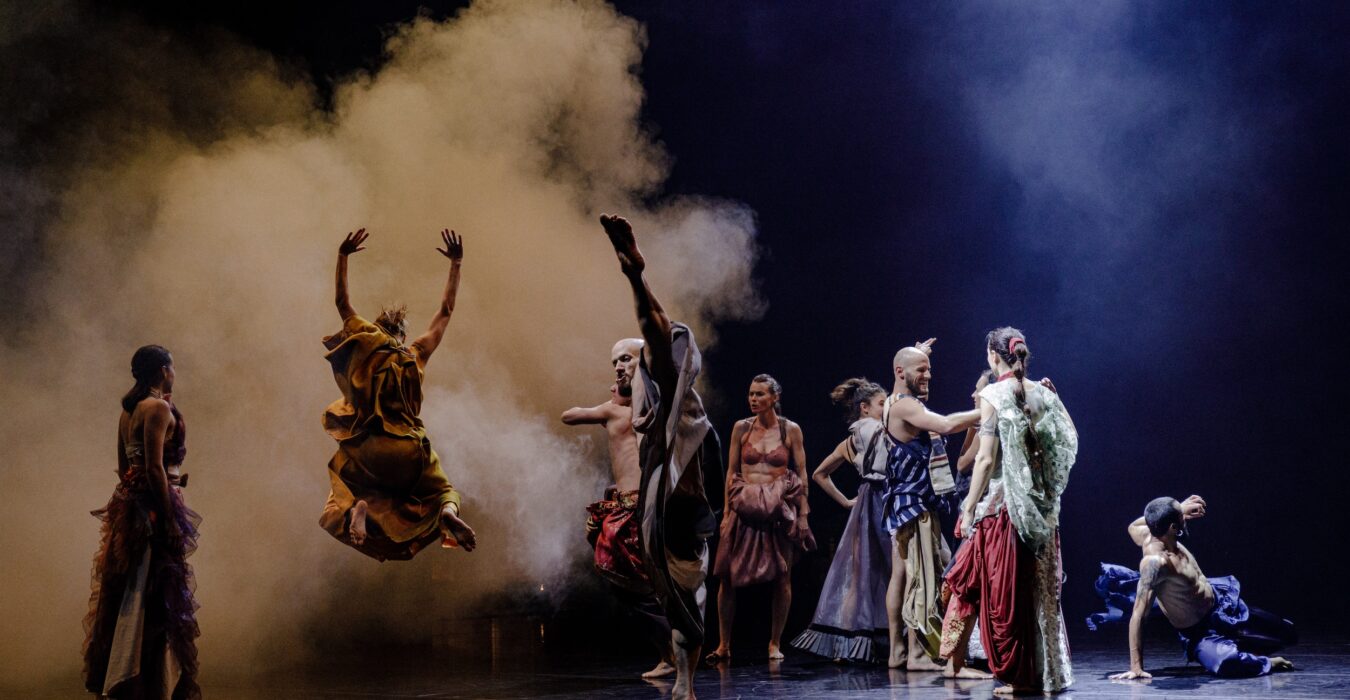Judson Church is Ringing in Harlem (Made to Measure)
Trajal Harrell (US)
Judson Church is Ringing in Harlem (Made to Measure)/Twenty Looks or Paris Burning at The Judson Church (M2M)
Ausdrucksstarker Tanz trifft auf Catwalk und politische Rede: Mit „Judson Church is Ringing in Harlem (Made to Measure)“ kreiert Harrell ein abendfüllendes Werk für drei Tänzer*innen, das sich mit der Extravaganz und Performativität des Voguings (Tanzstil, der sich an den Posen von Models orientiert) beschäftigt. Durch die Kombination dieser gegensätzlichen Stile positioniert Harrell den Einfluss von Jazz, Funk und Rhythm and Blues auf die Improvisation im frühen postmodernen Tanz neu. Im Scheinwerferlicht steht die Antigone des Sophokles, in einer völlig neuen, unerhört modernen Form. „Judson Church is Ringing in Harlem” ist Teil der Serie „Twenty Looks or Paris is Burning at The Judson Church“ und wurde mit einem Bessie-Award ausgezeichnet.
Der New Yorker Choreograf Trajal Harrell wurde 1973 in Georgia, USA, geboren. Er studierte an der Yale University, am Centre National de la Danse in Paris und an der Martha Graham School of Contemporary of Dance in New York. Seine Arbeiten wurden u.a. am MoMA (New York), im Barbican Centre (London) oder im Stedelijk Museum (Amsterdam) gezeigt. Harrell lebt und arbeitet heute in New York und Athen.
The question „What would have happened if one of the early postmoderns from Judson church had gone uptown to perform in the voguing ballroom scene in Harlem?“ is the central inspiration for this piece, yet Harrell is fully aware that this encounter between Harlem’s ballrooms and the villages’s community of post-modern choreographers never happened for various concrete reasons. His work is about artificially creating the place and time for this encounter, which reality denied, thus revealing the possibilities of such an unlikely union.
Voguing, and its protagonists lacked the socio-cultural standing to (for posterity) be more than an (albeit important) contribution to pop culture, whereas post-modern choreographers were destined to enter the dance hall of fame. This is painfully evident in the tragic fate of some of the Paris is Burning protagonists who didn’t have the luck to ‘make it on the big screen’ but instead ended up dead, shunned by a hostile society. What voguing did accomplish though was that it allowed its dancers to leave the roles assigned to them by society on the clothes hanger along with the humiliations and discriminations that come along with them.
Marlene Schock, Theaterkritik Berlin


